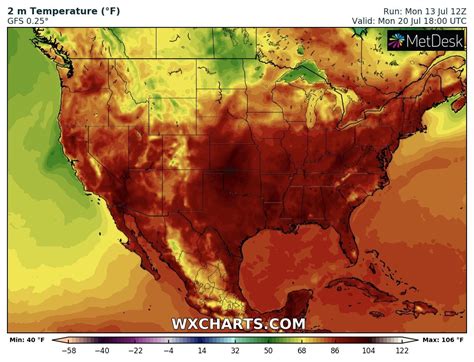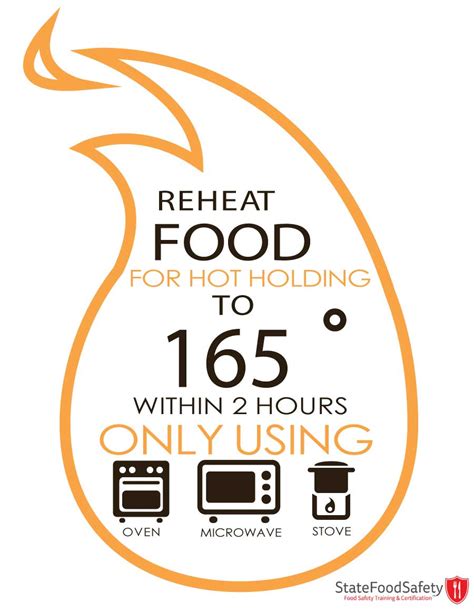
Several regions across the United States, including the Southwest, Southern Plains, Gulf Coast, and Southeast, are bracing for a summer of potentially record-breaking temperatures, with experts predicting prolonged periods of extreme heat that could pose significant risks to public health and infrastructure.
The National Oceanic and Atmospheric Administration (NOAA) has issued warnings indicating a high likelihood of above-average temperatures across these regions throughout the summer months. The forecasts suggest that the heat will not only be intense but also persistent, potentially leading to heat waves that last longer than usual. “The conditions are there for a hotter-than-average summer across a good portion of the country,” stated a NOAA meteorologist, highlighting the widespread concern among weather experts.
The Southwest, already accustomed to high temperatures, is expected to experience even more extreme conditions. Cities such as Phoenix and Las Vegas, which regularly see temperatures exceeding 100 degrees Fahrenheit, could face new record highs and extended periods of intense heat. The Southern Plains, including states like Texas and Oklahoma, are also at high risk. The combination of high temperatures and humidity in the Gulf Coast region could create dangerous heat index values, making it feel significantly hotter than the actual air temperature. The Southeast, including Florida and Georgia, is also preparing for an unusually hot summer, with potential impacts on agriculture and tourism.
The anticipated extreme heat poses several risks. Public health officials are particularly concerned about vulnerable populations, such as the elderly, children, and individuals with chronic illnesses. Exposure to extreme heat can lead to heatstroke, heat exhaustion, and other heat-related illnesses, which can be fatal if not treated promptly. The Centers for Disease Control and Prevention (CDC) recommends staying hydrated, avoiding strenuous activities during peak heat hours, and seeking air-conditioned environments as key strategies for preventing heat-related illnesses.
Beyond the immediate health risks, prolonged extreme heat can also strain infrastructure. Power grids may face increased demand as people turn up their air conditioners, potentially leading to blackouts and brownouts. Transportation systems, including roads and railways, can also be affected, with heat causing pavement to buckle and train tracks to warp. The agricultural sector is also vulnerable, as high temperatures can damage crops and reduce yields. Farmers may need to implement additional irrigation measures and adjust planting schedules to mitigate the impacts of the heat.
Local and state governments are taking steps to prepare for the anticipated extreme heat. Many cities are opening cooling centers, providing public spaces where people can seek refuge from the heat. Emergency management agencies are coordinating with healthcare providers to ensure that they are prepared to handle an influx of heat-related illness cases. Public awareness campaigns are also underway, educating people about the risks of extreme heat and how to protect themselves.
The NOAA’s Climate Prediction Center is closely monitoring temperature trends and issuing regular updates to help communities prepare. “We are tracking the potential for record-breaking temperatures and working with local partners to ensure that people have the information they need to stay safe,” said a spokesperson for the Climate Prediction Center. The agency’s forecasts are based on a combination of historical data, climate models, and real-time observations.
The upcoming summer’s heat is part of a broader trend of increasing global temperatures. Scientists attribute this trend to climate change, driven by human activities that release greenhouse gases into the atmosphere. The Intergovernmental Panel on Climate Change (IPCC) has warned that extreme heat events are likely to become more frequent and intense as the planet continues to warm.
The economic impacts of extreme heat can be significant. Heat-related illnesses can lead to increased healthcare costs, while reduced productivity can impact businesses and industries. The agricultural sector can suffer substantial losses due to crop damage, and increased energy demand can drive up electricity prices. Some studies have estimated that the economic costs of extreme heat could amount to billions of dollars per year in the United States alone.
Addressing the challenge of extreme heat requires a multi-faceted approach. In the short term, it is essential to implement measures to protect public health and ensure the resilience of infrastructure. In the long term, reducing greenhouse gas emissions and adapting to a changing climate are crucial steps. This includes investing in renewable energy sources, improving energy efficiency, and developing infrastructure that is more resistant to extreme weather events.
Communities can also take steps to mitigate the urban heat island effect, which occurs when cities are significantly warmer than surrounding rural areas due to the concentration of buildings, pavement, and other heat-absorbing surfaces. Strategies for reducing the urban heat island effect include planting trees, creating green spaces, and using reflective roofing materials.
The impending summer heat serves as a reminder of the growing challenges posed by climate change. By taking proactive measures to prepare for extreme heat and addressing the underlying causes of climate change, communities can protect public health, safeguard infrastructure, and build a more sustainable future. The focus remains on protecting vulnerable populations, ensuring infrastructure resilience, and raising public awareness about the risks of extreme heat.
Extended Details and Context
The forecasted extreme heat across the four U.S. regions isn’t just a matter of discomfort; it’s a multifaceted crisis with potential ramifications extending across public health, infrastructure, agriculture, and the economy. A deeper dive into each of these aspects reveals the complexity and urgency of the situation.
Public Health Implications:
The human body’s ability to regulate its internal temperature is challenged under extreme heat conditions. Prolonged exposure can lead to a range of heat-related illnesses, from mild heat cramps and heat exhaustion to life-threatening heatstroke. Heatstroke occurs when the body’s temperature rises to 104 degrees Fahrenheit (40 degrees Celsius) or higher, causing damage to the brain and other vital organs. Symptoms include confusion, seizures, and loss of consciousness.
Vulnerable populations, including the elderly, young children, and individuals with chronic illnesses like heart disease, diabetes, and respiratory conditions, are at higher risk. The elderly often have reduced thermoregulatory capacity, making it harder for them to cool down. Children, on the other hand, produce more metabolic heat and have a less developed sweating mechanism.
People who work outdoors, such as construction workers, agricultural laborers, and delivery drivers, are also particularly vulnerable. They face prolonged exposure to the sun and heat, increasing their risk of heat-related illnesses. Athletes who engage in strenuous activities during peak heat hours are also at risk.
Preventing heat-related illnesses requires a comprehensive approach. The CDC recommends staying hydrated by drinking plenty of water, avoiding sugary drinks and alcohol, and limiting strenuous activities during the hottest parts of the day. Wearing lightweight, loose-fitting clothing and seeking air-conditioned environments are also crucial. Cooling centers provide a safe haven for people who lack access to air conditioning at home.
Public health departments play a critical role in educating the public about the risks of extreme heat and promoting preventive measures. They also work with healthcare providers to ensure that they are prepared to handle an influx of heat-related illness cases. Heat emergency plans outline procedures for responding to heat waves, including activating cooling centers, distributing water, and providing medical assistance.
Infrastructure Strain:
Extreme heat can put a significant strain on infrastructure, particularly power grids and transportation systems. As temperatures rise, demand for electricity increases as people turn up their air conditioners. This can overload power grids, leading to blackouts and brownouts. Rolling blackouts may be implemented to prevent widespread outages.
Transportation systems are also vulnerable to extreme heat. Roads can buckle and crack under the intense heat, leading to traffic disruptions. Train tracks can warp, causing delays and derailments. Airports can also be affected, as high temperatures can reduce the lift capacity of aircraft, leading to flight cancellations.
Water infrastructure can also be affected. High temperatures can increase water demand, leading to shortages. Drought conditions, which often accompany heat waves, can exacerbate water scarcity. Water treatment plants may also struggle to keep up with demand, potentially affecting water quality.
To mitigate the impacts of extreme heat on infrastructure, investments are needed in grid modernization, infrastructure upgrades, and water conservation measures. Smart grids can help to distribute electricity more efficiently, reducing the risk of blackouts. Infrastructure improvements, such as reinforcing roads and railways, can make them more resistant to heat damage. Water conservation measures, such as promoting water-efficient appliances and landscaping, can help to reduce water demand.
Agricultural Impacts:
The agricultural sector is highly vulnerable to extreme heat. High temperatures can damage crops, reduce yields, and increase the risk of livestock heat stress. Heat stress can reduce milk production in dairy cows, decrease egg production in poultry, and increase mortality rates in livestock.
Farmers may need to implement additional irrigation measures to protect their crops from drought conditions. They may also need to adjust planting schedules to avoid the hottest parts of the growing season. Shade structures can provide relief for livestock from the sun.
Crop insurance programs can help farmers to mitigate the financial losses associated with extreme heat. Government assistance programs can also provide support to farmers who have been affected by drought or other extreme weather events.
Research and development efforts are focused on developing heat-resistant crop varieties and improving irrigation techniques. These efforts can help to make agriculture more resilient to climate change.
Economic Consequences:
The economic impacts of extreme heat can be substantial. Heat-related illnesses can lead to increased healthcare costs. Reduced productivity can impact businesses and industries. The agricultural sector can suffer substantial losses due to crop damage. Increased energy demand can drive up electricity prices.
Some studies have estimated that the economic costs of extreme heat could amount to billions of dollars per year in the United States alone. These costs are likely to increase as climate change continues to drive up temperatures.
Investing in climate resilience measures can help to reduce the economic costs of extreme heat. These measures include upgrading infrastructure, improving energy efficiency, and developing heat-resistant crop varieties. Taking action to reduce greenhouse gas emissions can also help to mitigate the long-term impacts of climate change.
Addressing the Challenge:
Addressing the challenge of extreme heat requires a multi-faceted approach. In the short term, it is essential to implement measures to protect public health and ensure the resilience of infrastructure. In the long term, reducing greenhouse gas emissions and adapting to a changing climate are crucial steps.
This includes:
- Public Awareness Campaigns: Educating the public about the risks of extreme heat and promoting preventive measures.
- Cooling Centers: Providing public spaces where people can seek refuge from the heat.
- Heat Emergency Plans: Outlining procedures for responding to heat waves, including activating cooling centers, distributing water, and providing medical assistance.
- Grid Modernization: Upgrading power grids to improve reliability and reduce the risk of blackouts.
- Infrastructure Improvements: Reinforcing roads and railways to make them more resistant to heat damage.
- Water Conservation Measures: Promoting water-efficient appliances and landscaping to reduce water demand.
- Climate Resilience Measures: Investing in measures to adapt to a changing climate, such as developing heat-resistant crop varieties and improving irrigation techniques.
- Greenhouse Gas Emission Reductions: Taking action to reduce greenhouse gas emissions, such as investing in renewable energy sources and improving energy efficiency.
By taking proactive measures to prepare for extreme heat and addressing the underlying causes of climate change, communities can protect public health, safeguard infrastructure, and build a more sustainable future. The focus remains on protecting vulnerable populations, ensuring infrastructure resilience, and raising public awareness about the risks of extreme heat.
The NOAA’s Climate Prediction Center is a key resource for monitoring temperature trends and issuing regular updates to help communities prepare. “We are committed to providing timely and accurate information to help people stay safe during extreme heat events,” said a representative from the Climate Prediction Center.
The impending summer heat serves as a stark reminder of the growing challenges posed by climate change and the urgent need for action.
Frequently Asked Questions (FAQ)
1. Which regions in the US are expected to experience extreme heat this summer?
The Southwest, Southern Plains, Gulf Coast, and Southeast regions of the United States are bracing for a summer of potentially record-breaking temperatures.
2. What are the primary health risks associated with extreme heat?
Exposure to extreme heat can lead to heatstroke, heat exhaustion, heat cramps, and other heat-related illnesses. Vulnerable populations, such as the elderly, children, and individuals with chronic illnesses, are particularly at risk.
3. How can individuals protect themselves during periods of extreme heat?
The CDC recommends staying hydrated by drinking plenty of water, avoiding sugary drinks and alcohol, limiting strenuous activities during the hottest parts of the day, wearing lightweight, loose-fitting clothing, and seeking air-conditioned environments or cooling centers.
4. What are the potential impacts of extreme heat on infrastructure?
Extreme heat can strain power grids, potentially leading to blackouts and brownouts. It can also cause roads to buckle, train tracks to warp, and reduce the lift capacity of aircraft, disrupting transportation systems. Water infrastructure may also be affected, with increased demand potentially leading to shortages.
5. What role does climate change play in the increasing frequency and intensity of extreme heat events?
Scientists attribute the increasing frequency and intensity of extreme heat events to climate change, driven by human activities that release greenhouse gases into the atmosphere. The Intergovernmental Panel on Climate Change (IPCC) has warned that these events are likely to become more common and severe as the planet continues to warm.
Detailed Strategies and Preventative Measures
To comprehensively address the anticipated extreme heat across the specified U.S. regions, a range of detailed strategies and preventative measures are crucial. These must be implemented at individual, community, and governmental levels to mitigate the adverse effects effectively.
Individual Level:
- Hydration is Key:
- Carry a water bottle at all times and refill it frequently.
- Drink water even before feeling thirsty. Aim for at least eight glasses (64 ounces) of water per day, and more during periods of intense heat or physical activity.
- Avoid sugary drinks, alcohol, and caffeinated beverages, as these can dehydrate the body.
- Consider electrolyte-rich drinks, especially after prolonged sweating, to replenish lost minerals.
- Clothing and Sun Protection:
- Wear lightweight, loose-fitting clothing made of breathable fabrics like cotton or linen.
- Choose light-colored clothing to reflect sunlight and reduce heat absorption.
- Apply sunscreen with an SPF of 30 or higher to all exposed skin, and reapply every two hours, especially when outdoors.
- Wear a wide-brimmed hat to protect the face, ears, and neck from the sun.
- Use sunglasses to shield the eyes from harmful UV rays.
- Timing and Activity Modification:
- Avoid strenuous activities during peak heat hours, typically between 10 a.m. and 4 p.m.
- If outdoor work or exercise is unavoidable, schedule it for early morning or late evening when temperatures are cooler.
- Take frequent breaks in shaded or air-conditioned environments to allow the body to cool down.
- Pace yourself and avoid overexertion.
- Indoor Environment Management:
- Stay in air-conditioned environments whenever possible. If air conditioning is not available, seek refuge in public cooling centers, libraries, or shopping malls.
- Use fans to circulate air, but remember that fans alone may not be sufficient to prevent heat-related illnesses in extreme heat.
- Take cool showers or baths to lower body temperature.
- Close curtains and blinds during the day to block out sunlight and reduce heat buildup.
- Avoid using ovens or stoves during the hottest parts of the day to prevent further heating the indoor environment.
- Recognizing Heat-Related Illnesses:
- Learn the signs and symptoms of heatstroke, heat exhaustion, and heat cramps.
- Seek medical attention immediately if you or someone you know exhibits symptoms of heatstroke, such as confusion, seizures, or loss of consciousness.
- For heat exhaustion, move to a cooler place, drink water, and apply cool cloths to the skin. If symptoms do not improve, seek medical attention.
- For heat cramps, gently stretch and massage the affected muscles and drink water or electrolyte-rich beverages.
- Vulnerable Populations:
- Check on elderly neighbors, relatives, and friends regularly to ensure they are staying cool and hydrated.
- Pay close attention to young children and infants, as they are more susceptible to heat-related illnesses.
- Ensure that individuals with chronic illnesses have access to air conditioning and are following their doctor’s recommendations for managing their conditions during extreme heat.
- Never leave children or pets unattended in vehicles, even for a short period of time, as temperatures inside vehicles can rise rapidly to dangerous levels.
Community Level:
- Cooling Centers:
- Establish and promote cooling centers in easily accessible locations, such as community centers, libraries, and senior centers.
- Ensure that cooling centers are adequately staffed and equipped with air conditioning, water, and first-aid supplies.
- Extend cooling center hours during heat waves to provide round-the-clock access to relief.
- Provide transportation to cooling centers for individuals who lack access to transportation.
- Public Awareness Campaigns:
- Launch public awareness campaigns to educate residents about the risks of extreme heat and how to protect themselves.
- Use a variety of communication channels, such as social media, websites, radio, and television, to reach a broad audience.
- Target messages to vulnerable populations, such as the elderly, children, and individuals with chronic illnesses.
- Provide information in multiple languages to reach diverse communities.
- Community Outreach Programs:
- Implement community outreach programs to check on vulnerable residents and provide assistance during heat waves.
- Train volunteers to identify individuals at risk and provide them with information and resources.
- Partner with community organizations, such as churches, social service agencies, and neighborhood associations, to expand outreach efforts.
- Emergency Response Plans:
- Develop and implement comprehensive emergency response plans to address heat waves.
- Coordinate with healthcare providers, emergency management agencies, and other stakeholders to ensure a coordinated response.
- Establish protocols for activating cooling centers, distributing water, and providing medical assistance.
- Conduct drills and exercises to test the effectiveness of the emergency response plan.
- Urban Heat Island Mitigation:
- Plant trees and create green spaces to provide shade and reduce surface temperatures.
- Use reflective roofing materials and pavement to reduce heat absorption.
- Encourage the development of green roofs and walls.
- Promote the use of permeable pavement to reduce runoff and increase water absorption.
Governmental Level:
- Policy and Regulation:
- Enact policies and regulations to protect workers from heat stress, such as mandatory rest breaks and access to water.
- Establish building codes that promote energy efficiency and reduce heat gain.
- Implement zoning regulations that encourage the development of green spaces and reduce the urban heat island effect.
- Provide financial incentives for homeowners and businesses to invest in energy-efficient upgrades and renewable energy sources.
- Infrastructure Investment:
- Invest in upgrading and modernizing power grids to improve reliability and reduce the risk of blackouts.
- Reinforce roads and railways to make them more resistant to heat damage.
- Improve water infrastructure to increase water storage and reduce water loss.
- Develop and implement water conservation strategies to reduce water demand.
- Research and Development:
- Fund research and development efforts to develop heat-resistant crop varieties and improve irrigation techniques.
- Support research on the health impacts of extreme heat and the effectiveness of different prevention strategies.
- Invest in climate modeling and forecasting to improve the accuracy of heat wave predictions.
- Interagency Coordination:
- Establish a multi-agency task force to coordinate efforts to address extreme heat.
- Foster collaboration among federal, state, and local agencies to share information and resources.
- Engage with stakeholders from the private sector, academia, and community organizations to develop comprehensive solutions.
- Emergency Preparedness Funding:
- Allocate sufficient funding to support emergency preparedness and response activities related to extreme heat.
- Provide grants to local communities to implement cooling centers, conduct public awareness campaigns, and develop emergency response plans.
- Ensure that healthcare providers have the resources they need to handle an influx of heat-related illness cases.
- Climate Change Mitigation:
- Implement policies to reduce greenhouse gas emissions, such as investing in renewable energy sources and improving energy efficiency.
- Support international efforts to address climate change.
- Promote sustainable development practices to reduce the environmental impact of human activities.
By implementing these detailed strategies and preventative measures at all levels, communities can better prepare for and respond to the challenges of extreme heat, protecting public health, safeguarding infrastructure, and building a more sustainable future.
Socioeconomic Disparities and Environmental Justice
The impact of extreme heat is not uniformly distributed across society. Socioeconomic disparities and environmental justice issues play a significant role in determining who is most vulnerable and how severely they are affected.
Vulnerable Populations:
- Low-Income Communities: Low-income communities often lack access to air conditioning, have inadequate housing, and live in areas with limited green spaces, making them more susceptible to the effects of extreme heat.
- Elderly: The elderly often have reduced thermoregulatory capacity and may have chronic health conditions that increase their risk of heat-related illnesses. Many elderly individuals live alone and may be isolated from social support networks.
- Children: Children produce more metabolic heat and have a less developed sweating mechanism, making them more vulnerable to heatstroke and other heat-related illnesses.
- People with Disabilities: People with disabilities may have mobility limitations that make it difficult for them to seek shelter from the heat. They may also have health conditions that increase their risk of heat-related illnesses.
- Homeless Individuals: Homeless individuals lack access to shelter and are often exposed to the elements for prolonged periods of time. They may also have underlying health conditions and limited access to healthcare.
- Outdoor Workers: Outdoor workers, such as construction workers, agricultural laborers, and delivery drivers, face prolonged exposure to the sun and heat, increasing their risk of heat-related illnesses.
Environmental Justice Issues:
- Urban Heat Islands: Urban heat islands are areas where temperatures are significantly higher than surrounding rural areas due to the concentration of buildings, pavement, and other heat-absorbing surfaces. Low-income and minority communities are often disproportionately located in urban heat islands.
- Lack of Green Spaces: Low-income communities often have fewer parks, trees, and other green spaces, which can help to mitigate the effects of extreme heat.
- Poor Housing Quality: Low-income communities often have older and less energy-efficient housing, which can exacerbate the effects of extreme heat.
- Limited Access to Transportation: Low-income communities may have limited access to transportation, making it difficult for residents to reach cooling centers and other resources.
- Language Barriers: Language barriers can make it difficult for non-English speaking residents to access information about extreme heat and how to protect themselves.
Addressing Disparities and Promoting Environmental Justice:
To address the socioeconomic disparities and environmental justice issues related to extreme heat, it is essential to implement targeted interventions that focus on the needs of vulnerable populations.
- Targeted Outreach: Conduct targeted outreach to vulnerable communities to educate residents about the risks of extreme heat and how to protect themselves.
- Cooling Centers in Vulnerable Areas: Locate cooling centers in easily accessible locations within low-income and minority communities.
- Improve Housing Quality: Invest in programs to improve the energy efficiency of housing in low-income communities.
- Increase Green Spaces: Create more parks, trees, and other green spaces in low-income communities to help mitigate the urban heat island effect.
- Improve Transportation Access: Improve transportation access to cooling centers and other resources for residents of low-income communities.
- Provide Information in Multiple Languages: Provide information about extreme heat in multiple languages to reach diverse communities.
- Empower Community Organizations: Partner with community organizations to develop and implement solutions that are tailored to the needs of local residents.
- Address Systemic Inequities: Address the systemic inequities that contribute to the vulnerability of certain populations to extreme heat. This includes addressing issues such as poverty, lack of access to healthcare, and discrimination.
By addressing these disparities and promoting environmental justice, communities can ensure that all residents have the resources they need to protect themselves from the effects of extreme heat.
Long-Term Strategies: Climate Change Mitigation and Adaptation
Addressing the challenge of extreme heat effectively requires not only short-term preparedness and response measures but also long-term strategies focused on climate change mitigation and adaptation.
Climate Change Mitigation:
Mitigation refers to efforts to reduce greenhouse gas emissions and slow the pace of climate change. Key strategies include:
- Transition to Renewable Energy:
- Invest in renewable energy sources such as solar, wind, geothermal, and hydropower.
- Phase out fossil fuels, such as coal, oil, and natural gas.
- Provide incentives for homeowners and businesses to install solar panels and other renewable energy systems.
- Improve Energy Efficiency:
- Implement energy-efficient building codes.
- Provide incentives for homeowners and businesses to upgrade to energy-efficient appliances and equipment.
- Promote the use of public transportation, cycling, and walking.
- Invest in smart grid technologies to improve the efficiency of electricity distribution.
- Reduce Transportation Emissions:
- Promote the use of electric vehicles (EVs) and hybrid vehicles.
- Invest in public transportation infrastructure.
- Encourage telecommuting and flexible work arrangements.
- Improve fuel efficiency standards for vehicles.
- Sustainable Land Management:
- Protect and restore forests, which absorb carbon dioxide from the atmosphere.
- Promote sustainable agricultural practices that reduce greenhouse gas emissions and increase carbon sequestration in soils.
- Reduce deforestation and land degradation.
Climate Change Adaptation:
Adaptation refers to efforts to adjust to the impacts of climate change that are already occurring or are expected to occur in the future. Key strategies include:
- Infrastructure Resilience:
- Upgrade infrastructure to withstand extreme weather events, such as heat waves, floods, and droughts.
- Reinforce roads, bridges, and other transportation infrastructure.
- Improve water management systems to reduce water loss and increase water storage.
- Strengthen power grids to improve reliability and reduce the risk of blackouts.
- Public Health Preparedness:
- Develop and implement heat emergency plans.
- Establish and maintain cooling centers.
- Train healthcare providers to recognize and treat heat-related illnesses.
- Conduct public awareness campaigns to educate residents about the risks of extreme heat.
- Ecosystem Protection:
- Protect and restore natural ecosystems, such as wetlands and forests, which can provide natural protection from extreme weather events.
- Manage water resources sustainably to ensure adequate water supplies for both human and ecological needs.
- Restore degraded ecosystems to improve their resilience to climate change impacts.
- Agricultural Adaptation:
- Develop heat-resistant crop varieties.
- Improve irrigation techniques to reduce water demand.
- Adjust planting schedules to avoid the hottest parts of the growing season.
- Provide support to farmers who have been affected by extreme weather events.
- Community Planning and Development:
- Incorporate climate change considerations into community planning and development decisions.
- Promote compact, walkable, and transit-oriented development.
- Develop green infrastructure to reduce the urban heat island effect and manage stormwater runoff.
- Encourage the use of sustainable building materials and practices.
By implementing these long-term strategies for climate change mitigation and adaptation, communities can reduce their vulnerability to extreme heat and build a more sustainable future. It is essential to recognize that climate change is a global challenge that requires a coordinated international response. The United States must work with other countries to reduce greenhouse gas emissions and support adaptation efforts in developing nations.
Conclusion
The impending scorching summer across the Southwest, Southern Plains, Gulf Coast, and Southeast regions of the United States presents a complex and urgent challenge. The convergence of extreme heat with existing socioeconomic vulnerabilities, infrastructure limitations, and environmental justice concerns necessitates a comprehensive and multifaceted approach.
Short-term preparedness measures, such as public awareness campaigns, cooling centers, and emergency response plans, are crucial for mitigating the immediate health risks and ensuring the safety of vulnerable populations. However, these measures alone are insufficient to address the underlying causes and long-term consequences of extreme heat.
Long-term strategies focused on climate change mitigation and adaptation are essential for reducing greenhouse gas emissions, building infrastructure resilience, and protecting ecosystems. These strategies require a concerted effort from individuals, communities, governments, and the international community.
Addressing the socioeconomic disparities and environmental justice issues related to extreme heat is paramount. Targeted interventions are needed to support vulnerable populations, improve housing quality, increase green spaces, and promote equitable access to resources.
The impending summer heat serves as a stark reminder of the growing challenges posed by climate change and the urgent need for action. By taking proactive measures to prepare for extreme heat, addressing the underlying causes of climate change, and promoting social and environmental justice, communities can protect public health, safeguard infrastructure, and build a more sustainable future for all. The time to act is now.









